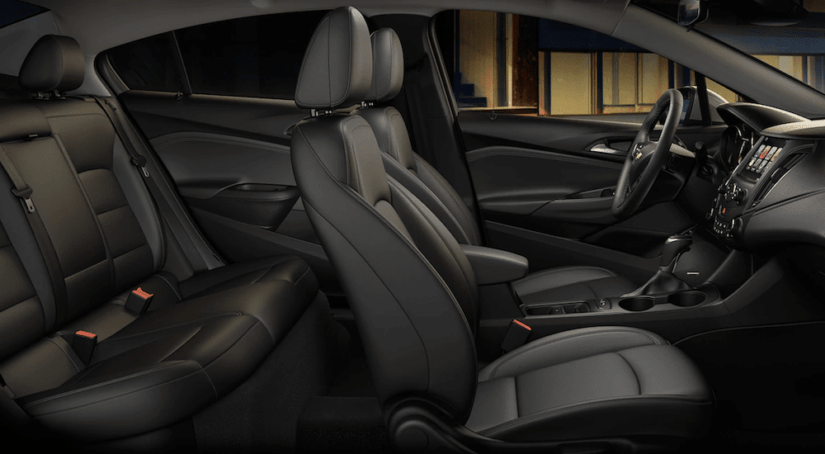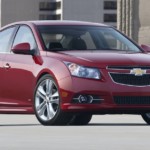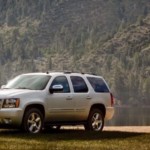It has remained one of the most influential, top-performing automotive manufacturers for decades. Since its introduction in 1911, the Chevrolet motor company has set automotive trends time and time again both in the US and around the globe. Countless Chevy cars have become class leading, category-defining models that other manufacturers struggle to contend with. Virtually everyone who’s ever driven on the road has either seen or driven a Chevy at some point in their lives.
How does such a large, influential company come to be? In a day and age where most large companies are less than a couple decades old, an automotive manufacturer like Chevy has the unique distinction of being one of the elders in American industry. From humble beginnings to quick, widespread success, Chevrolet has a history that represents both the promises and struggles of the American dream.
Here’s a brief look at the origins of the Chevrolet motor company and how Chevy cars have become such a defining feature of automotive design and manufacturing.
Humble Beginnings
While General Motors owns the Chevrolet motor company these days, the two major companies actually started off as rivals at the start of the 20th century. In 1911, Swiss race driver/automotive engineer Lewis Chevrolet joined forces with William C. Durant, who co-founded General Motors a few years before, to create the rival Chevrolet motor company. Durant had been ousted from his position at General Motors in 1910 and was looking for the next step in his automotive entrepreneurial career.
Together, the two founded the company and eventually rolled out the very first Chevy car, the Series C Classic Six. In 1913, the very first model was introduced at the New York automotive show to reveal to the whole world.
Chevrolet quickly became a respectable competitor in what was, at the time, a very crowded automotive market filled by the likes of General Motors, Buick motor company, Ford, and more. Over the first decade of the company’s life, they rolled out several different models such as the Series 490.
Joining Forces With GM
It wasn’t long until Chevrolet’s success began to open up new doors and possibilities for the co-founder. While Lewis Chevrolet, the company’s namesake, moved on to other opportunities due to differences and disagreements with Durant, Durant himself stayed on to lead the company into the next chapter of its existence.
Eventually, sales became high enough that Durant was able to purchase some controlling shares of General Motors, placing him back into the company he co-founded, and that had ousted him just a few years before. This began the long, profitable relationship between General Motors and the Chevrolet brand. The Chevrolet motor company became a separate division under the GM umbrella.
Starting around 1919, the fruits of this joining started to roll off the assembly line. GMC trucks, for example, started to become the Chevrolet full-size work trucks that would go on to define generations of pickup design.
At this time, the growing rivalry between Chevrolet and Ford intensified. Throughout the next several decades, these two manufacturers became the top-tier performers in the American automotive industry. Consistently outperforming the likes of Chrysler and Dodge, both Chevrolet and Ford took turns taking jabs at one another through new models and design styles.
Modern Design
Surviving the drastic changes that World War II had delivered, Chevrolet expanded its reach starting in the 1950s while helping to grow the American automotive industry again. Around this time, the company started to introduce more sports-oriented cars with lighter materials such as fiberglass chassis. In 1953, the first Corvette rolled off the assembly line with the company introducing the first fuel injected engine a couple of years later.
By the 60s and 70s, Chevrolet had defined the general trend of American muscle cars that a growing, youthful generation had clung to define their own automotive preferences and styles. Around this time, the widely popular Chevy Impala became one of the top selling cars, marking a drastic shift towards a more family-friendly, fuel-efficient design.
At the start of the new millennium, Chevrolet became a true global brand with a major presence in Europe and Asia. The company also began to push the envelope of futuristic automotive design, focusing on new technologies that marked a unique shift in the existing automotive paradigm. These futuristic changes included the introduction of the plug-in hybrid, the Chevrolet Volt, and the Chevrolet Bolt EV. Both models became high-performing alternative fuel platforms, with the Bolt being the first mass-produced electric vehicle to enjoy success as a convenient, affordable purchase.
The Influence Of Chevy Cars
It is difficult to overrepresent the impact the Chevrolet motor company has had on general automotive design and manufacturing. As a company that has existed for over a century in one form or another, Chevy has made a dramatic impact time and time again on a number of cars, trucks, and SUVs. Even when it hasn’t been the first to the table with a new automotive trend or style, it has quickly put its own unique spin on automotive design.
The company’s influence on sports, muscle, and family cars alone is unrivaled. For a company that helped to define the muscle car popularity of the 50s and 60s, Chevrolet took the right steps to solidify its place in automotive history with several models that continue to remain popular and in demand to this very day. It’s shift towards more family-oriented and fuel-efficient vehicles in the 80s, 90s, and the new millennium also demonstrates that the company knows how to stay ahead of the curve when times are changing.
This barely begins to scratch the surface of Chevrolet’s influence on larger vehicles such as pickup trucks. Along with Ford, Chevrolet has set the benchmark for high-performance and reliable pickups for generations. In fact, it is not uncommon to see a Chevy pickup from the 50s or 60s still rolling along today as if it had just been built.
Overall, Chevy cars and trucks have been a major presence on streets and roads all around the world for decades. For the future, the company has shown no signs of slowing down. From rolling out new concept cars to refining the successful designs of existing vehicles, Chevrolet will keep pushing the envelope for the foreseeable future.



